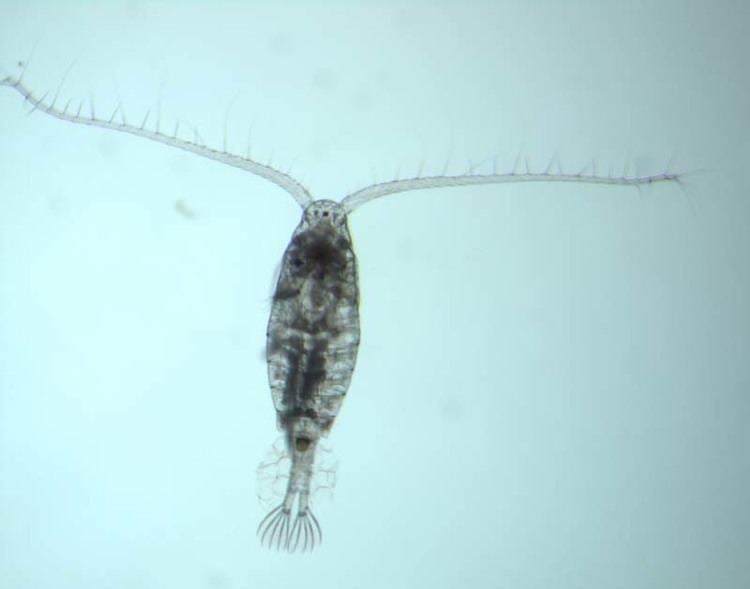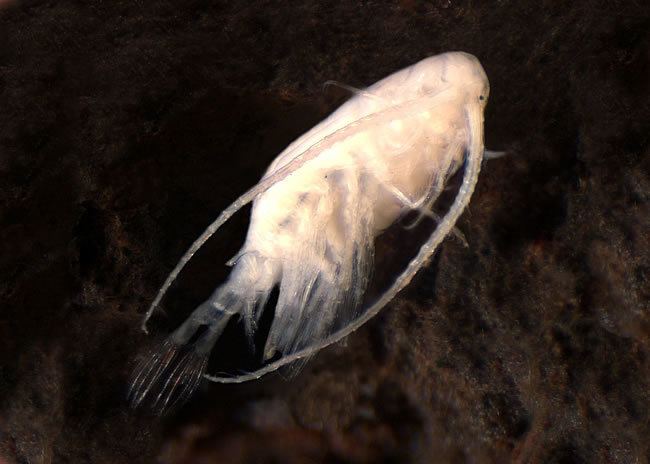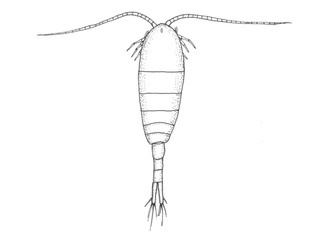Scientific name Calanoida Higher classification Gymnoplea Subclass Copepod | ||
 | ||
Superorder GymnopleaGiesbrecht, 1882 Lower classifications Acartia, Calanus, Diaptomus, Diaptomidae, Paracalanus | ||
Calanoida copepod
Calanoida is an order of copepods, a kind of zooplankton. They include around 40 families with about 1800 species of both marine and freshwater copepods. Calanoid copepods are dominant in the plankton in many parts of the world's oceans, making up 55%–95% of plankton samples. They are therefore important in many food webs, taking in energy from phytoplankton and algae and 'repackaging' it for consumption by higher trophic level predators. Many commercial fish are dependent on calanoid copepods for diet in either their larval or adult forms. Baleen whales such as bowhead whales, sei whales, right whales and fin whales eat calanoid copepods.
Contents

Calanoids can be distinguished from other planktonic copepods by having first antennae at least half the length of the body and biramous second antennae. Their key defining feature anatomically, however, is the presence of a joint between the fifth and sixth body segments. The largest specimens reach 18 millimetres (0.71 in) long, but most are 0.5–2.0 mm (0.02–0.08 in) long.

Classification
Calanoida contains the following families, and the genus Microdisseta, incertae sedis.


